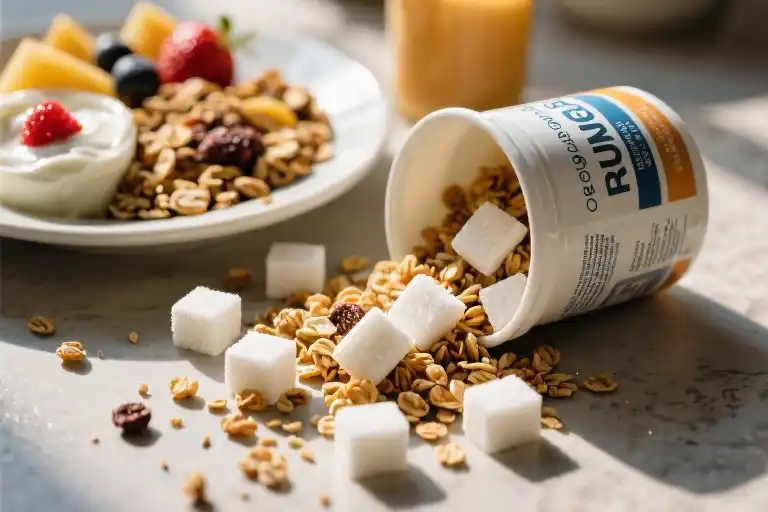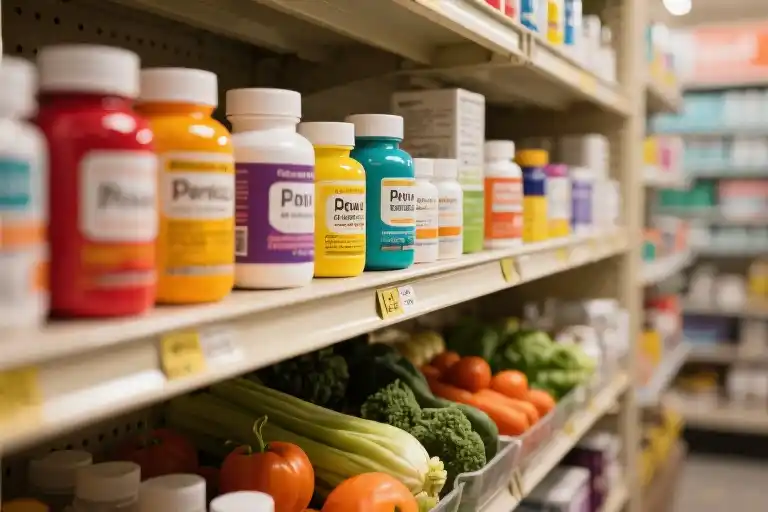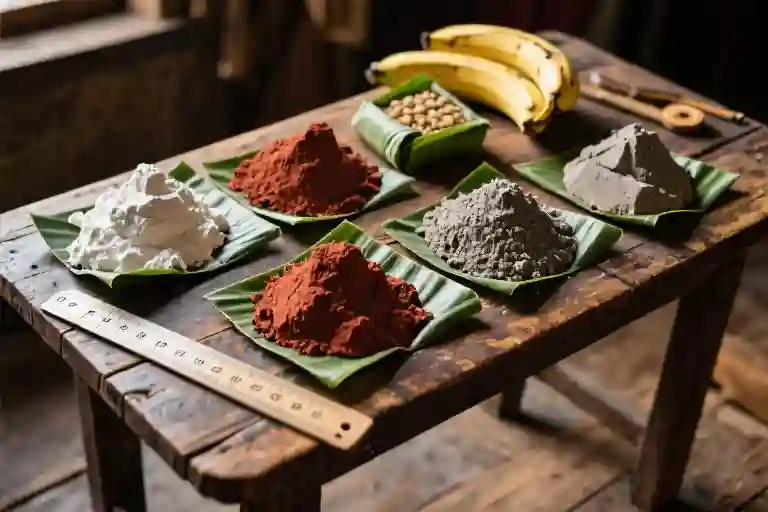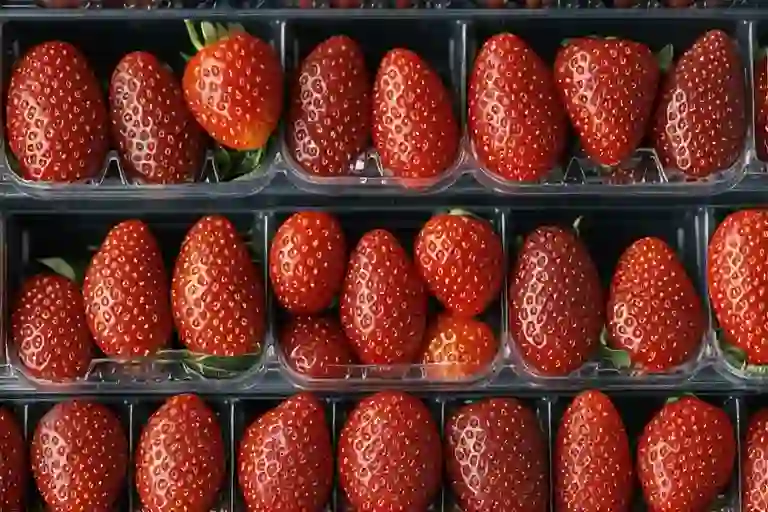The fluorescent lights hummed overhead as I stared blankly at my laptop screen. Forty-five minutes until the biggest presentation of my career, and my brain had flatlined. That familiar fog rolled in—the kind no amount of coffee could burn away. My palms were damp against the keyboard, heartbeat erratic despite sitting still. This wasn’t normal stress. This was my body screaming through layers of exhaustion I’d learned to ignore.
On my desk sat the remnants of my “healthy” breakfast: a bowl of organic granola with almond milk and a banana. The same meal I’d eaten for years, convinced it fueled my busy mornings. Then the revelation hit—those innocent-looking oat clusters packed more sugar than a can of soda. My “nutritious” starter contained 18 grams of added sweeteners before I even touched the fruit. No wonder I crashed harder than my browser during peak workload.
This wasn’t about willpower. Not when my hands shook uncontrollably by 11 AM unless I grabbed a muffin. Not when my mood swings made me snap at colleagues over minor typos. The fatigue, the cravings, the inexplicable weight gain—they were all symptoms of something deeper. Sugar wasn’t just in my diet; it had rewired my physiology. That morning, as I fumbled through slides with cotton-mouth concentration, I finally understood: I wasn’t lacking discipline. I was metabolically hijacked.
What doctors dismissed as “normal aging”—the 3 PM energy slumps, the stubborn belly fat, the sleepless nights despite exhaustion—were actually red flags. My blood sugar rollercoaster mirrored an addiction cycle, complete with withdrawal symptoms and compulsive behavior. Those “balanced” meals? They kept feeding the beast with hidden sugars in whole wheat bread, yogurt, even salad dressings. Every attempt to cut calories or exercise more just intensified the cravings. The scale never budged, but my desperation grew.
By the time I stood before executives that afternoon, voice wavering as I misread my own notes, the truth crystallized. No amount of meditation apps or productivity hacks could fix this. My brain fog wasn’t a personal failing—it was a biological alarm. Sugar had its claws in me, and breaking free would require more than swapping desserts for fruit. It demanded rewiring my understanding of nutrition itself.
The journey began with that humiliating presentation. Not with a fad diet or New Year’s resolution, but with raw survival instinct. When your body starts shutting down basic functions, extreme measures become necessities. Giving up sugar wasn’t a lifestyle choice—it was metabolic triage.
The Body’s SOS Signals: When Doctors Can’t Find What’s Wrong
That nagging exhaustion wasn’t just tiredness. The afternoon brain fog went beyond normal forgetfulness. My unexplained mood swings? They weren’t just stress. For years, I dismissed these symptoms as part of modern life—until my body started sending louder distress calls.
7 Metabolic Red Flags Your Doctor Might Miss
- The 3pm Energy Crash: That overwhelming fatigue hitting like clockwork after lunch, no matter what you ate
- Hunger Headaches: Intense, almost migraine-like pains that disappear the moment you eat something sweet
- Nighttime Restlessness: Waking at 3am with a racing heart, only to crave a midnight snack
- Skin Betrayal: Unexplained adult acne or skin tags appearing where you never had them before
- Emotional Rollercoaster: Irritability that disappears after eating, then returns with vengeance
- Endless Thirst: Drinking water constantly yet still feeling dehydrated
- The Weight Loss Plateau: Doing “everything right” but the scale won’t budge—or worse, keeps creeping up
My annual physicals always came back “perfect.” Blood work? “Normal range.” Thyroid? “Functioning fine.” Meanwhile, I was rationing my energy like scarce currency, scheduling meetings around my predictable energy crashes.
The Dieting Merry-Go-Round
- 2018: 1200-calorie counting → Lost 8lbs, gained back 12
- 2019: Keto → Lost water weight, then developed intense sugar cravings
- 2020: “Balanced” macros → Constant hunger and obsessive food thoughts
- 2021: Intermittent fasting → Better focus initially, then debilitating afternoon fatigue
Each attempt left me more discouraged. The common denominator? Every “healthy” diet allowed what I didn’t yet recognize as my real problem—hidden sugars masquerading as nutritious choices.
Metabolic Crisis Self-Assessment
Score each symptom (0=never, 3=constant):
| Symptom | Score |
|---|---|
| Energy crashes after meals | |
| Difficulty concentrating | |
| Craving sweets when stressed | |
| Waking unrested | |
| Increased belly fat | |
| Frequent thirst/urination | |
| Mood swings tied to meals |
7-12 points: Early metabolic distress
13-18 points: Significant sugar dependence
19+ points: Urgent need for dietary intervention
What no one told me: These weren’t separate issues, but branches of the same tree—my body’s desperate attempts to cope with constant sugar surges. That “normal” blood work? It was measuring snapshots, not the metabolic rollercoaster between tests.
The turning point came when I connected two facts: 1) My great-grandmother never experienced these symptoms, and 2) Her diet contained less sugar in a month than mine did in a single day. Our bodies haven’t evolved to handle modern sugar loads—they send distress signals we’ve learned to ignore.
Next time you reach for that “healthy” granola bar when fatigue hits, pause. Your body isn’t failing you—it’s brilliantly signaling that something in your system needs attention. The solution isn’t another diet plan, but learning to decode these cries for help.
Sugar’s Addiction Conspiracy: How It Hijacks Your Brain and Body
That mid-afternoon crash where you can barely keep your eyes open? The insatiable hunger that hits 30 minutes after lunch? Those aren’t character flaws—they’re biochemical reactions to a substance that activates your brain’s reward system like hard drugs. Modern neuroscience reveals sugar isn’t just sweet; it’s engineered addiction.
The Brain Scan Evidence
Functional MRI studies show something terrifying: sucrose lights up the nucleus accumbens—the brain’s pleasure center—with nearly identical intensity as cocaine. Researchers at Yale found that sugar triggers dopamine release 50% higher than normal food rewards. This isn’t metaphorical; we’re talking measurable neurochemical hijacking.
What makes sugar uniquely dangerous:
- Faster high: Hits bloodstream quicker than street drugs (30 seconds vs. 10 minutes for nicotine)
- Double withdrawal: Causes both blood sugar crashes AND dopamine depletion
- Social camouflage: Celebrated in birthdays, holidays, workplace culture
The Insulin Rollercoaster
Here’s why that “healthy” acai bowl leaves you ravenous by 11AM:
- Phase 1 (0-30 min): Blood sugar spikes to 180mg/dL from your “low-fat” fruit smoothie
- Phase 2 (30-90 min): Pancreas floods your system with insulin to compensate
- Phase 3 (90-120 min): Glucose drops below baseline (65mg/dL), triggering cortisol and hunger hormones
This cycle creates metabolic confusion where:
- Leptin (satiety hormone) receptors stop responding
- Ghrelin (hunger hormone) production increases 28%
- Cells become resistant to insulin’s “open up for energy” signal
The result? You’re biologically compelled to reach for more sugar while your body stores fat just to survive the coming crash.
Supermarket Betrayal: 10 “Healthy” Foods That Are Sugar Bombs
Armed with a glucose monitor and nutrition labels, I conducted a 30-day supermarket investigation. Here’s the hall of shame:
| Food Item | Sugar (tsp) | Sugar Aliases Used |
|---|---|---|
| Flavored Yogurt | 7 | Evaporated cane juice, fruit concentrate |
| Granola | 5 | Brown rice syrup, honey |
| Protein Bars | 6 | Tapioca syrup, date paste |
| Tomato Sauce | 4 | Dextrose, maltodextrin |
| Instant Oatmeal | 3 | Maple syrup crystals |
| Sports Drinks | 9 | Glucose-fructose syrup |
| Salad Dressings | 2 | Agave nectar, pear juice |
| Whole Wheat Bread | 3 | Molasses, raisin juice |
| Nut Butters | 2 | Coconut sugar, monk fruit extract* |
| Green Juices | 8 | Apple juice concentrate |
*Note: Many “natural” sweeteners still spike blood sugar identically to table sugar
Breaking the Spell
Three cognitive shifts that helped me see through the illusion:
- The evolutionary mismatch: Our ancestors encountered sugar 2-3 times/year (ripe fruit); we get 17 teaspoons daily
- The profit motive: Food scientists use “bliss point” formulas to maximize cravings
- The self-perpetuating cycle: Each spike makes the next crash worse, creating artificial hunger
This isn’t about willpower. When your prefrontal cortex (decision-maker) is starved of glucose during crashes, biological imperative overrides rational thought. The solution? Starve the addiction, not yourself—which brings us to your survival toolkit in Chapter 3.
Navigating the Modern Food Jungle: Your Sugar Detective Toolkit
Decoding the 56 Names of Sugar
That “healthy” granola bar you grabbed on the go? It likely contains three different types of sugar under innocent-sounding names. The food industry has become frighteningly creative at disguising sugar in ingredient lists. Here’s what to scan for:
The Usual Suspects:
- Cane juice crystals
- Caramel
- Dextrose
- Evaporated cane juice
- Fruit juice concentrate
The “Healthy” Imposters:
- Agave nectar (marketed as natural but contains 85% fructose)
- Brown rice syrup
- Coconut sugar
- Date syrup
- Maple syrup
The Chemical Sounding Ones:
- Dextrin
- Maltodextrin
- Ethyl maltol
- Polydextrose
Pro Tip: Ingredients ending in “-ose” are almost always sugars (fructose, glucose, sucrose). Download our printable “Sugar Alias Cheat Sheet” to keep in your wallet.
Social Survival Phrases
At Work Functions:
“That cake looks amazing! I’m doing a little experiment with how different foods affect my energy levels – mind if I pass this time?” (Smile + change subject)
Family Gatherings:
“Aunt Linda, your pies are legendary! Would you mind if I brought my own sugar-free version to share next time? I’d love your expert opinion on it.” (Flatters + shows initiative)
Romantic Dates:
“Let’s split an appetizer instead of dessert – I find I enjoy our conversation more when I’m not in a sugar coma afterward.” (Humorous + relationship-focused)
Emergency Craving Stoppers
- Olives & Cheese Cubes – The salty-fat combo short-circuits sugar cravings
- Coconut Flakes – Natural sweetness with healthy fats
- Pickle Spears – The vinegar helps stabilize blood sugar
- Hard-Boiled Eggs – Portable protein power
- Almond Butter Spoonful – Rich texture satisfies oral fixation
Bonus: Keep a “sugar emergency kit” in your bag with:
- Single-serve almond packs
- Cinnamon gum (shown to reduce cravings)
- Small bottle of MCT oil (quick energy boost)
- Printed list of your “why” for quitting sugar
Supermarket Reconnaissance Tactics
The 5-Second Label Scan:
- Check serving size first (many products list unrealistic portions)
- Look at “Total Carbohydrates” then subtract “Dietary Fiber”
- Anything over 5g of sugar per serving is a red flag
Aisle Avoidance Strategy:
- Stick to perimeter shopping (produce, meats, dairy)
- Never shop hungry (increases impulse buys by 60%)
- Wear headphones playing upbeat music (reduces marketing influence)
Visual Trick: Imagine each gram of sugar as one sugar cube piled on the product. Would you eat 12 sugar cubes with that yogurt?
Restaurant Hacks That Actually Work
- The Sauce Sideline: “Could you please serve the dressing/sauce on the side?”
- Protein First: “I’ll have the burger, but could you swap the bun for extra lettuce and avocado?”
- Strategic Substitutions: “Instead of fries, what vegetable sides do you have?”
- Beverage Defense: “Just water for me tonight – with lemon if you have it!”
Psychological Edge: Research shows waitstaff appreciate clear, polite requests more than vague “healthy” orders.
Your Pantry Makeover Checklist
✅ Toss Immediately:
- Bottled sauces (teriyaki, BBQ, ketchup)
- Flavored yogurts
- Breakfast cereals
- Packaged baked goods
✅ Replace With:
- Mustards (yellow, Dijon, whole grain)
- Plain Greek yogurt (add your own berries)
- Steel-cut oats
- Nut butter (ingredients: just nuts + salt)
Weekend Mission: Spend 20 minutes reading every label in your pantry. You’ll spot patterns in sneaky sugar sources unique to your household.
Remember: This isn’t about perfection. Each time you identify and avoid hidden sugars, you’re rewiring your taste buds and metabolic health. Keep your sugar detective notebook handy – those small daily victories add up to life-changing results.
The 3-Phase Metabolic Reboot Plan
Phase 1: Detox (Days 1-7) – Breaking Free from Sugar’s Grip
The first seven days will test your resolve like nothing else. Your body, accustomed to constant sugar hits, will rebel with headaches, irritability, and intense cravings. This isn’t failure – it’s proof the detox is working.
Electrolyte Rescue Protocol:
- Mix ¼ tsp Himalayan pink salt + ¼ tsp cream of tartar + 1 tbsp lemon juice in warm water (twice daily)
- Soak in Epsom salt baths (2 cups magnesium flakes + ½ cup baking soda) to ease muscle aches
- Carry celery sticks and olives for emergency salty cravings
Survival Tactics:
- Schedule this phase during a low-stress work period
- Prepare “No-Sugar Zones” (purge pantry items with >5g sugar/serving)
- Temporary caffeine reduction prevents compounded withdrawal
Phase 2: Rewiring (Weeks 2-3) – Rediscovering Real Flavors
As taste buds reset, you’ll experience culinary rebirth. Formerly “bland” vegetables reveal hidden sweetness, while commercial foods taste shockingly artificial.
Taste Bud Training:
- Morning palate cleanse: bitter greens (arugula/radicchio) with olive oil
- Progressive dark chocolate ladder: Start at 70% cacao, advance 5% weekly
- Spice exploration: Cardamom and cinnamon satisfy sweet cravings
Cognitive Shifts:
- Keep a flavor journal noting new perceptions
- Experiment with umami-rich foods (mushrooms, aged cheeses)
- Notice how energy stabilizes without afternoon crashes
Phase 3: Metabolic Freedom (Week 4+) – The New Normal
This isn’t about deprivation – it’s about metabolic flexibility. Your body now efficiently burns fat for fuel, ending the sugar rollercoaster.
Golden Ratios for Maintenance:
- 50% plate non-starchy vegetables
- 30% quality proteins (wild-caught fish, grass-fed meats)
- 20% healthy fats (avocados, nuts, olive oil)
- Occasional berries/tart apples as natural sweeteners
Lifelong Strategies:
- The “5-Ingredient Rule” for packaged foods
- Social eating playbook (always eat protein before dessert events)
- Quarterly “Sugar Audits” to prevent creep
Pro Tip: Track non-scale victories – clearer skin, steady energy, and that newfound ability to walk past office donuts without a second glance are your true success metrics.
The 90-Day Transformation: Your New Morning Reality
My Before & After Journal
Day 1 (Pre-Sugar Free)
6:30 AM: Alarm blares. Hit snooze three times.
7:00 AM: Stumble to kitchen, grab “healthy” strawberry yogurt (22g sugar).
7:30 AM: Second coffee with flavored creamer to combat crashing eyelids.
8:15 AM: Conference call brain fog—miss two important data points.
Day 90 (Sugar-Free)
6:15 AM: Natural wake-up before alarm.
6:30 AM: Lemon water + avocado toast with chia seeds.
7:00 AM: Clear-headed email triage.
8:00 AM: Creative brainstorming session with steady energy.
Real People, Real Turning Points
- Sarah, 38 (Marketing Director)
“The moment I realized my ‘low-fat’ salad dressing had 14g sugar per serving—more than my daughter’s juice box. That hypocrisy snapped something in me.” - David, 42 (Software Engineer)
“Day 7 of withdrawal when I suddenly noticed the actual taste of blueberries. Not ‘not sweet enough’ like before—just explosively fruity. That’s when I knew my taste buds were rebooting.” - Maria, 35 (Teacher)
“Finding my third ‘hidden sugar’ culprit—barbecue sauce—was my supermarket detective triumph. Now my students call me the Sugar Sherlock.”
Your Action Ladder
Today:
- Scan your fridge/pantry for any product with >5g sugar per serving
- Replace one sugary staple (e.g., swap flavored yogurt for plain Greek + berries)
This Week:
- Try one sugar-free breakfast (scrambled eggs + avocado)
- Notice energy dips 2 hours after meals (your insulin response clues)
This Month:
- Master reading nutrition labels (ingredients list > marketing claims)
- Experiment with cinnamon/vanilla as natural flavor enhancers
Remember: Every sugar-free morning compounds. That clarity you feel at Day 30? It becomes your new normal by Day 90. Your body knows how to thrive—you’re just removing the obstacle course it’s been running through.





